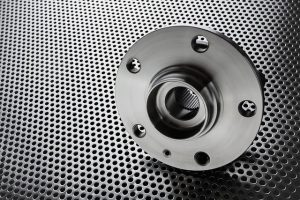
Permanent mold casting is a casting process that, as the name suggests, involves the use of a permanent mold. Unlike with casting processes, the mold can be reused for multiple casting applications. During permanent mold casting, molten metal is forced into a mold cavity. As it fills the mold cavity, it creates a new object in the same shape and size. While all permanent mold casting processes involve filling a reusable mold with molten metal, there are four primary approaches to it.
#1) Gravity Permanent Mold Casting
Gravity permanent mold casting is an approach that uses a preheated mold. The mold is heated to a temperature of about 300 to 400 degrees Fahrenheit, after which it’s filled with molten metal. The use of a preheated mold allows the molten metal to flow more easily. Gravity permanent mold casting has a lower rate of defects because the molten metal is cable to fill the mold cavity more effectively when compared to other permanent mold casting processes.
#2) Slush Permanent Mold Casting
Another approach to permanent mold casting is slush. What is slush mold casting exactly? It’s essentially a variation of permanent mold casting that’s used to produce hollow castings. During slush permanent mold casting, molten metal is poured into a special mold cavity. The molten metal doesn’t completely fill the mold cavity. Rather, it fills the sides of the mold casting, essentially creating a shell. Once the shell has formed, it’s ejected from the mold cavity.
#3) Low-Pressure Permanent Mold Casting
A third approach to permanent mold casting is low pressure. Low-pressure permanent mold casting is a casting process that uses pressurized gas to force molten metal into a mold cavity. The gas is typically pressurized to around 3 to 10 pounds per square inch (PSI). Although it’s not a substantial amount of pressure, it’s more than enough to force molten metal into a mold cavity. With pressurized gas, the molten metal is able to completely fill the mold cavity.
#4) Vacuum Permanent Mold Casting
Finally, vacuum permanent mold casting is a casting process that uses vacuum pressure to fill a mold cavity with molten metal. It’s similar to low-pressure permanent mold casting, with both processes using pressure to fill a mold cavity with molten metal. Vacuum permanent mold casting, however, uses vacuum pressure, which often results in better physical properties when compared to its low-pressure counterpart.
